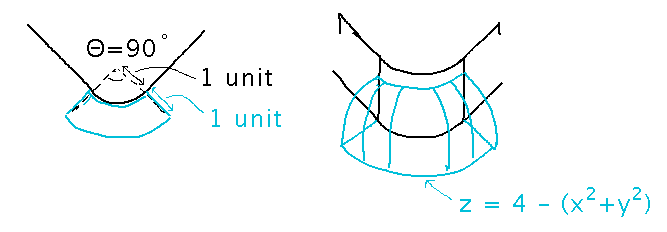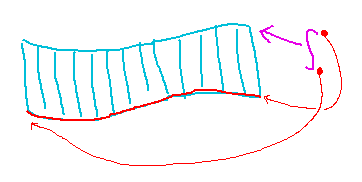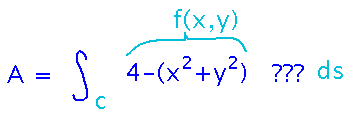Misc
Colloquiua
History of calculus today: 2:30, Newton 202.
Monday November 19, 4:00 PM, Marcus Elia, “NTRU: An Example of a Quantum-Resistant Public Key Cryptosystem.”
Thursday November 29, 2:30, Jessalyn Bolkema, title forthcoming.
Wednesday December 5, speaker and title forthcoming.
Extra credit for the usual write-up on any of these.
Questions?
Setting up the bounds for question 3 in the multivariable integrals problem set?
The problem describes a cylinder with variable density, and asks you to find its mass. To get mass from density, you can integrate density over the volume in question (the cylinder). Now think about the bounds, starting with the easy ones: the easiest is probably that z ranges from 0 to 2. Then for each z value in this range, you have to integrate around a circular slice of the cylinder, which suggests polar coordinates -- in polar form, the circles have bounds of 0 to 1 for radius, and 0 to 2π for angle.

Line Integrals
Part of section 6.2.
Example
The area of the back wall of the greenhouse we used as an example last Thursday.

What’s going on here: how to conceptualize the solution, and how does it connect to the reading?
Think of this as finding an area (of the wall) under a curve (the one along which the greenhouse roof intersects the wall), which would be a one-dimensional integral. Except the line along which you need to integrate isn’t a nice straight x axis, its a curve in the xy plane.

Such integrals are “line integrals.”
Solve it
The function to integrate is the height-of-the-roof function. Conceptually we need to integrate it along a curve (“C” in typical examples), and we’re integrating with respect to little increments of distance along that curve (“ds”).





Key Points
Line integrals are 1-dimensional integrals along arbitrary paths rather than along an axis.
Describe the path in parametric form.
Equation for evaluating a line integral, given a parametric path.
Problem Set
See handout for details
Next
More examples and practice with scalar line integrals.